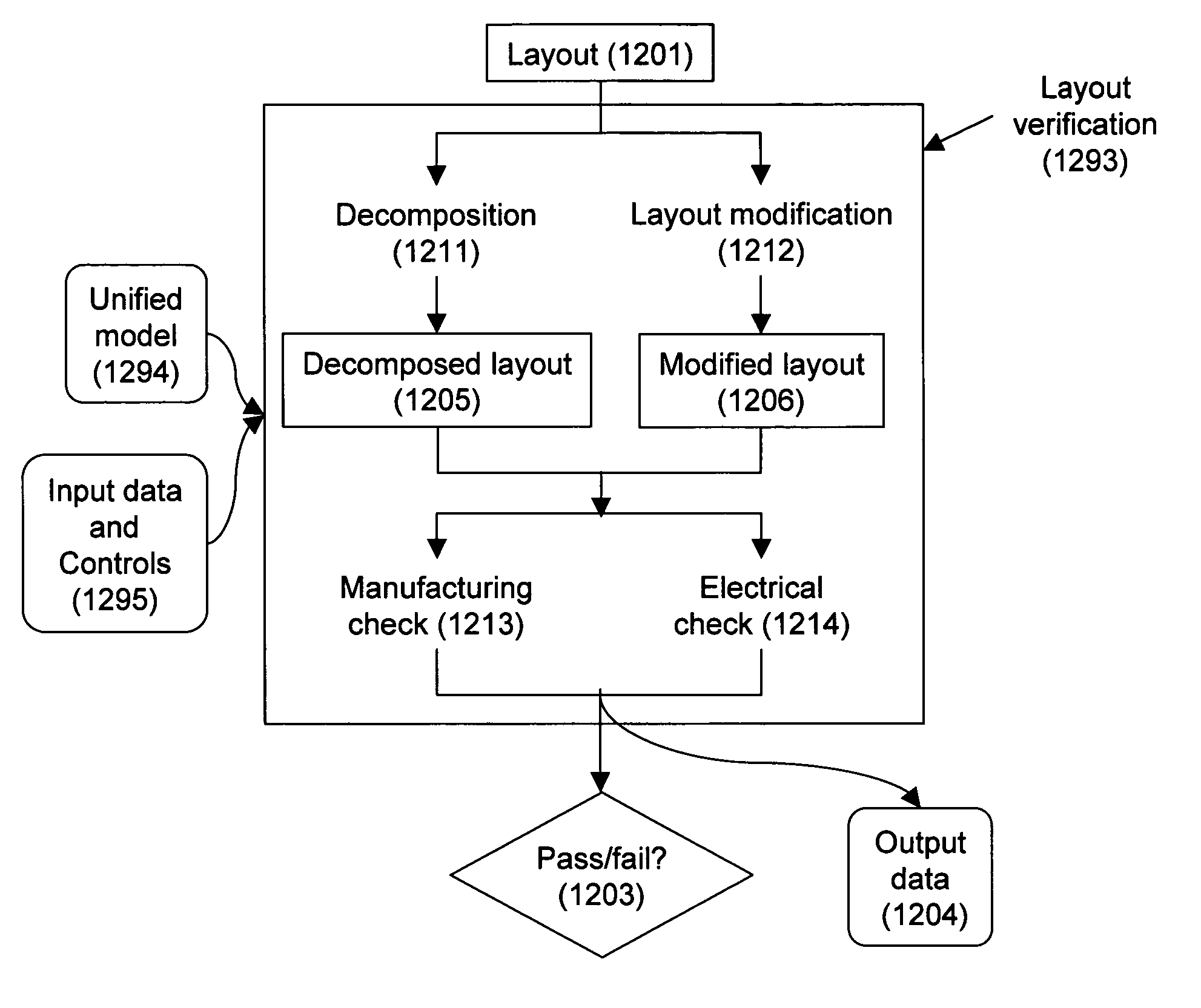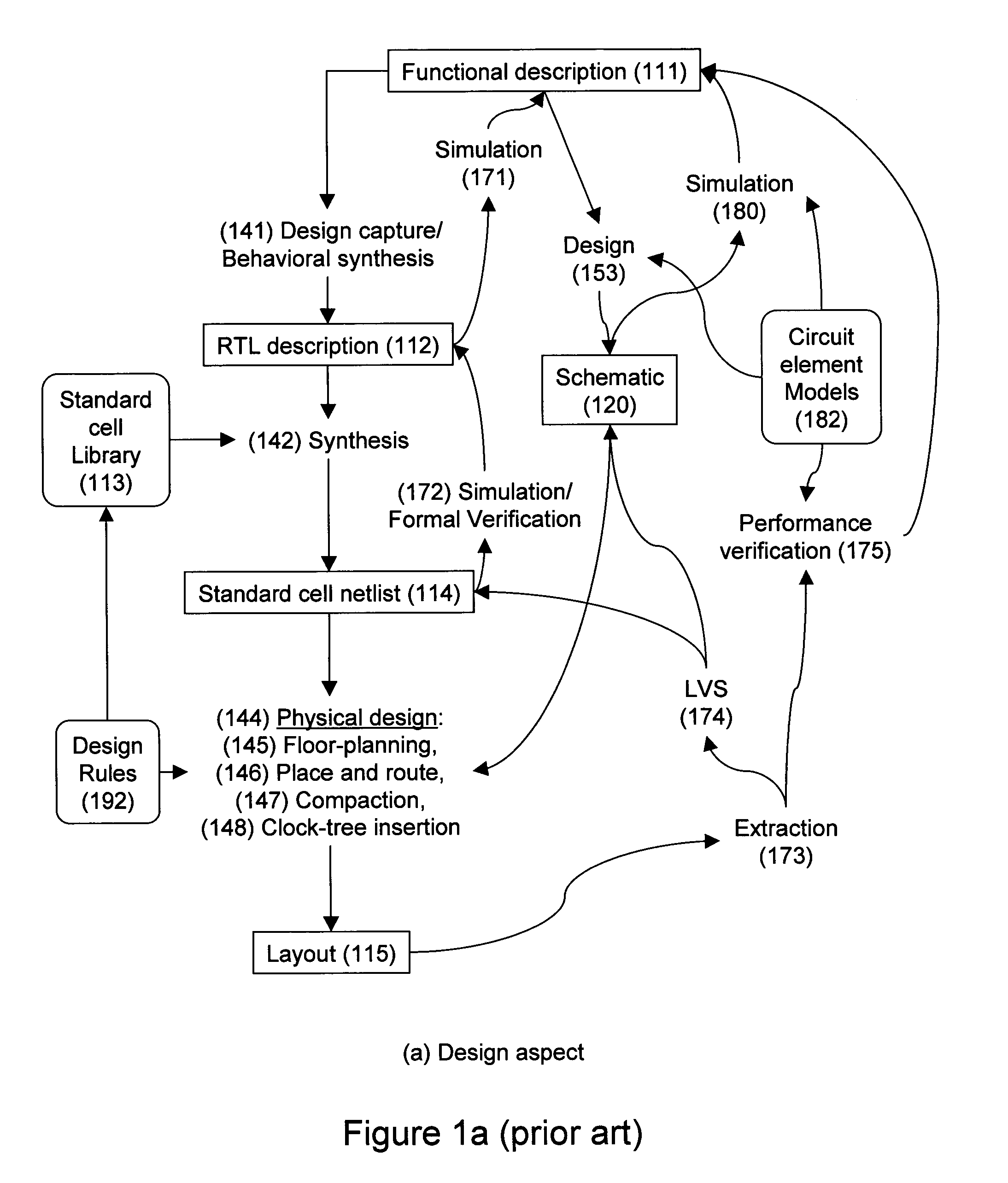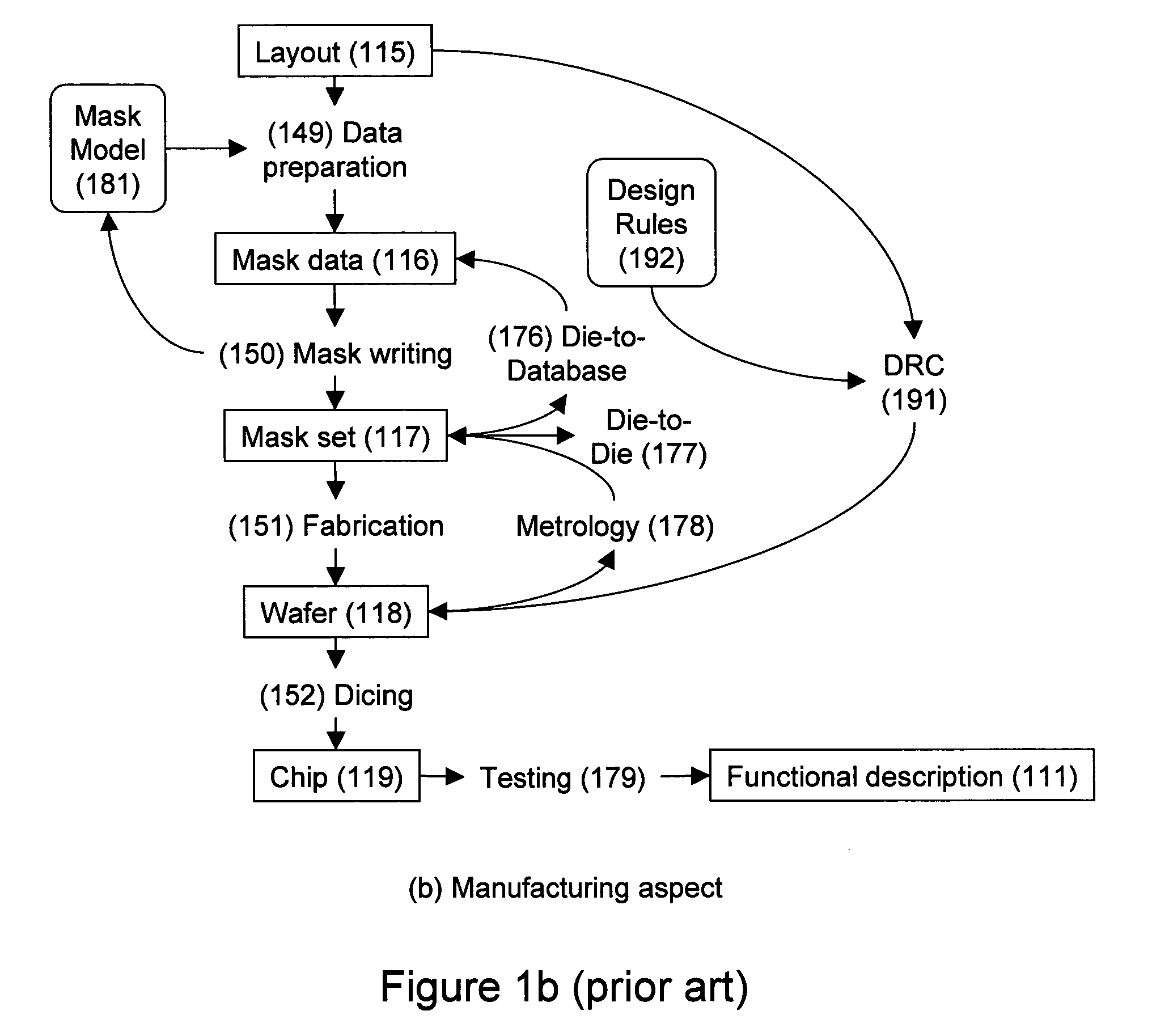Design-manufacturing interface via a unified model
a design-manufacturing interface and unified model technology, applied in the field of integrated circuits, can solve the problems of insufficient reproduction of geometrical shapes on masks, increasing challenges to the semiconductor industry by cd miniaturization, and increasing tension in ic fabrication
- Summary
- Abstract
- Description
- Claims
- Application Information
AI Technical Summary
Benefits of technology
Problems solved by technology
Method used
Image
Examples
Embodiment Construction
To address the issues with existing design rules and to maintain the advantage of design-manufacturing division, the layout verification process shown in FIG. 12 has been developed to complement or to replace the existing DRC process shown in FIG. 2. Given a layout (1201) representing target wafer shapes or shapes from which target wafer shapes can be derived, a unified model of manufacturing processes and circuit elements (1294), and input data and controls (1295), layout verification (1293) determines whether the layout shapes are properly sized and placed such that the circuit eventually fabricated is both manufacturable and electrically functional. The input data and controls (1295) can provide the layout verification process (1293) with information including the specifics of the layout such as the prime cell name, the layout data format, and the layer mapping information. They can also control layout verification (1293), for example, by specifying the layout levels to be verif...
PUM
 Login to View More
Login to View More Abstract
Description
Claims
Application Information
 Login to View More
Login to View More - R&D
- Intellectual Property
- Life Sciences
- Materials
- Tech Scout
- Unparalleled Data Quality
- Higher Quality Content
- 60% Fewer Hallucinations
Browse by: Latest US Patents, China's latest patents, Technical Efficacy Thesaurus, Application Domain, Technology Topic, Popular Technical Reports.
© 2025 PatSnap. All rights reserved.Legal|Privacy policy|Modern Slavery Act Transparency Statement|Sitemap|About US| Contact US: help@patsnap.com



